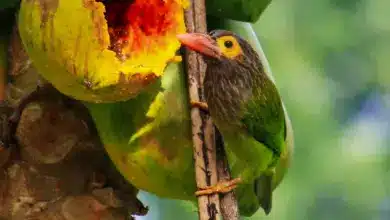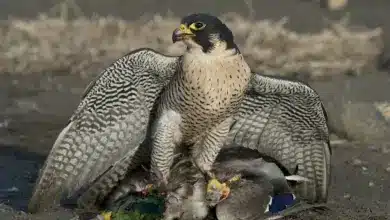Black-spotted Barbets
The Black-spotted Barbet (Capito niger) is a bird species in the Capitonidae family.
These barbets are usually found in pairs or small flocks. It has a range in a contiguous region that is centered on the Guiana Highlands and the northeast Amazon.
Physical Description:
The Black-spotted Barbet averages 7.5 inches or 19 cm in length (including its tail) and weighs betwen 48 – 58g (1.7 – oz).
The plumage is mostly black, with red, white and yellow markings. It has a stout bill.
The male has an orange-red throat, a yellow chest with brown streaks on the side of the belly. His forecrown is buff-yellow.
The female looks alike, except she has stronger black markings on the underbelly.
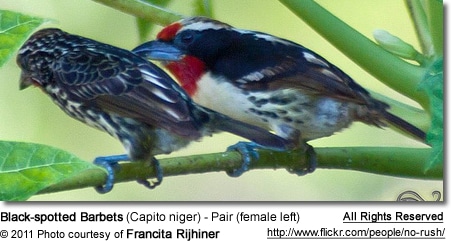
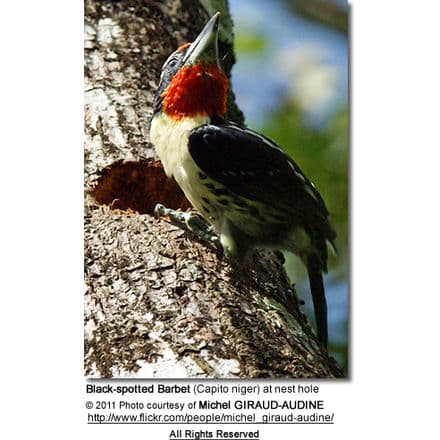
Distribution / Range
Its range encompasses eastern Columbia, eastern Peru, Brazil, the Guianas, French Guiana, Suriname and Venezuela.
Its western range limit is eastern Venezuela. In the south in Brazil’s Roraima state, it is only found on the eastern banks of the south-flowing Branco River.
It is found in the northeast Amazon Basin in Brazil’s states of Roraima, Pará and Amapá, on the Atlantic coast bordering French Guiana.
They spend most of their time in the middle or high up in the canopy of forests. They occur occurs in subtropical and tropical moist lowland forests, as well as subtropical and tropical swamps, as well as heavily degraded former forests. They may also visits human habitats , including plantations.
American Barbet Information … American Barbet Species Index … American Barbet Species Photo Gallery
Reproduction:
They typically nest in tree hollows, usually century plant stalks or abandoned woodpecker nests. They will also excavate new holes in soft woods.
The average clutch size consists of 2 – 5 eggs per clutch, which are incubated by both parents for about 18 days. Newly hatched chicks are altrical (= mostly naked at birth, and helpless – totally dependand on their parents for warmth and nourishment).
Their thick heal pads protect them from the rough floor surface. The young leave the nest when they are about 30 days old, but will still be fed by their parents for several weeks afterwards.
and both parents incubate the eggs for about 18 days. Fledging occurs at around day 30. The young are (dependant on their parents) and
Diet:
Their main diet consists of nectar and various fruits, but they will also feed on insects and spiders.
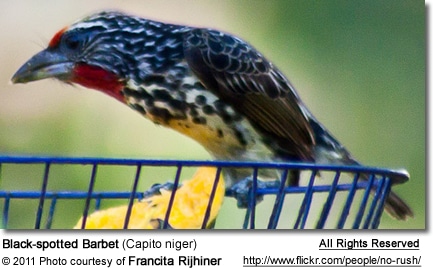
Taxonomy
They are monotypic, meaning one single species (not subspecies). Previously, the Gilded Barbet — found in the southern and western Amazon basin – was considered a subspecies.
Although to this day, there are still authorities (including Sibley and Monroe) either consider these species conspecific (one species) while others consider the Gilded Barbet as a subspecies.

